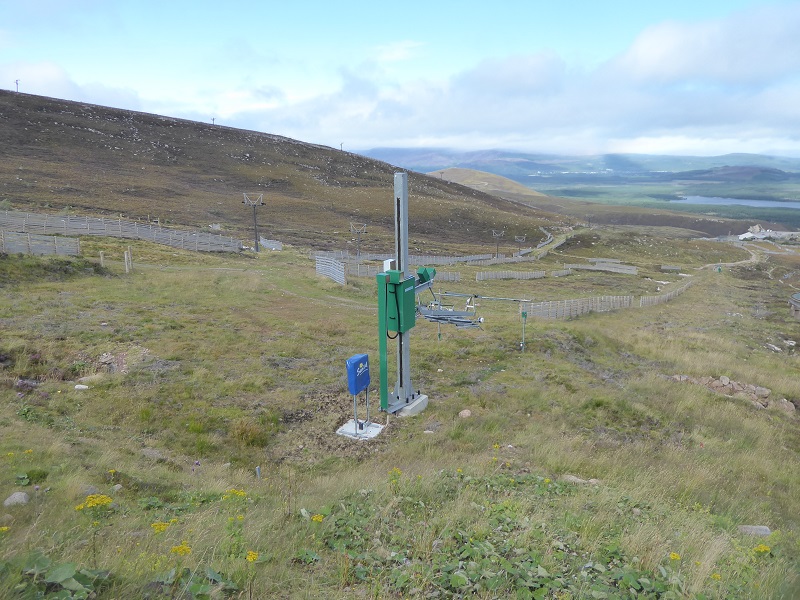
After the extensive coverage parkswatch gave to the destruction caused by engineering works in Coire Cas last year (see here for example), at the end of August a small group of us went to have a look at how the restoration work was going. In my view while there have been some improvements, there is a long way to go. The purpose of this post is to illustrate some of the issues.
That there had been some improvements did not surprise us as Highlands and Islands Enterprise have been paying for a clear-up at Cairngorm in preparation for a planning application to install a dry ski slope above the Coire Cas Car Park (see here) and redevelop the Ptarmigan restaurant. Neither application would look good if Cairngorm was still a tip. A few weeks ago Natural Retreats submitted a planning application for the Dry Ski Slope but this was then, mysteriously, withdrawn.

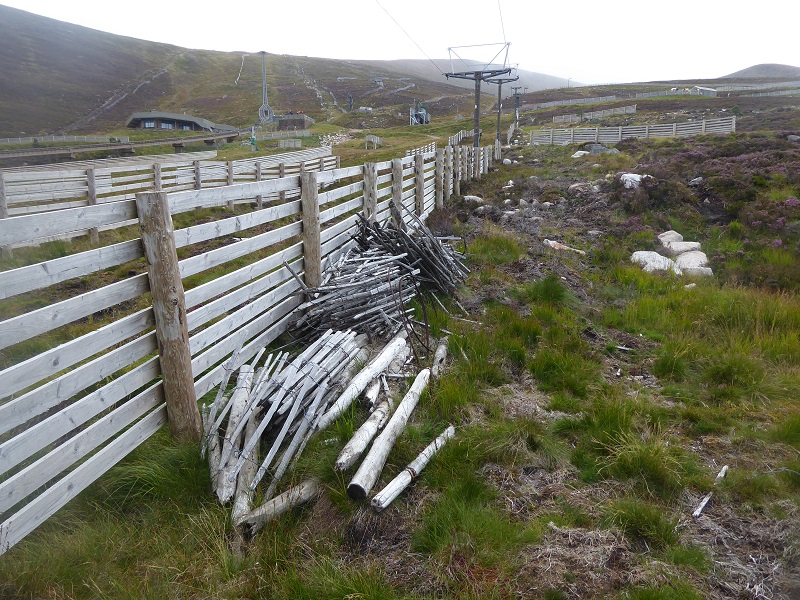 While a fair bit of rubbish has been removed from Coire Cas, including bits of pipe that must have been there 30 years, we did not have to look far to find more. The cynic in me wondered if it had been placed on this side of the fence so it could not be seen by passengers travelling in the funicular!
While a fair bit of rubbish has been removed from Coire Cas, including bits of pipe that must have been there 30 years, we did not have to look far to find more. The cynic in me wondered if it had been placed on this side of the fence so it could not be seen by passengers travelling in the funicular!
The restoration of the shieling track
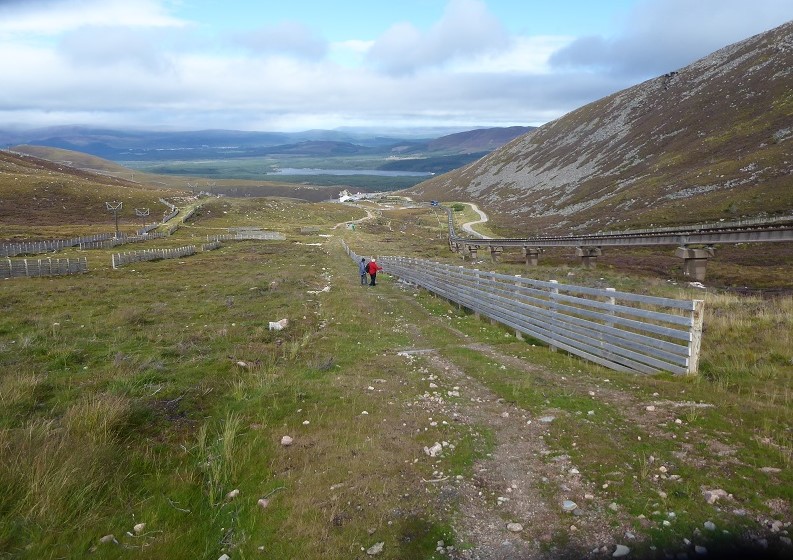 The shieling track, which had been created unlawfully and then granted retrospective planning permission by the Cairngorms National Park Authority (see here) looked far better then we had expected. The whole track surface, including wheel lanes, had been re-seeded which has helped to stabilise the ground and cross drains installed, as required by the CNPA. So, were conservationists wrong to oppose it? I don’t think so. The reason why it looks this good is that it has not been used.. The question is what will happen if and when it does?
The shieling track, which had been created unlawfully and then granted retrospective planning permission by the Cairngorms National Park Authority (see here) looked far better then we had expected. The whole track surface, including wheel lanes, had been re-seeded which has helped to stabilise the ground and cross drains installed, as required by the CNPA. So, were conservationists wrong to oppose it? I don’t think so. The reason why it looks this good is that it has not been used.. The question is what will happen if and when it does?
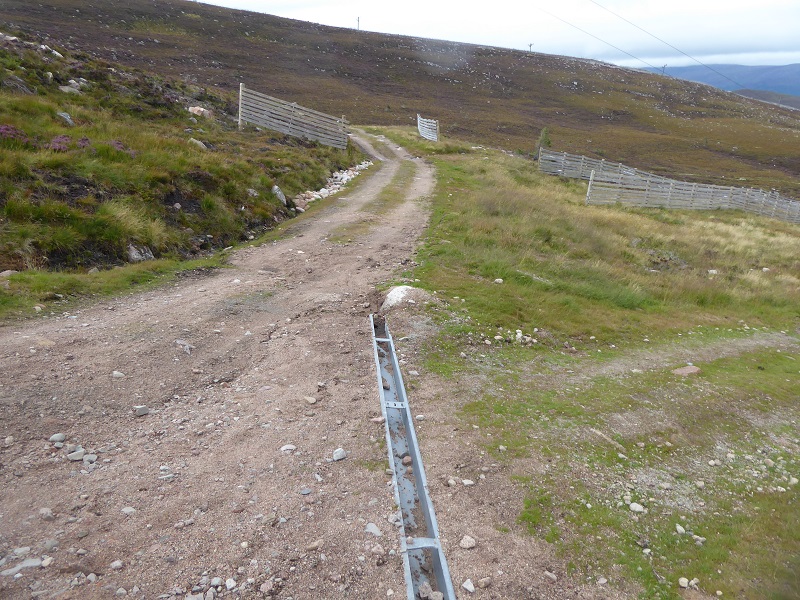
There is evidence for what will happen this from the top of the shieling track (the start of the track is to the right of the cross drain in the photo). As soon as vehicles use this ground the re-seeded grass is likely to wear away and the surface of the track erode, as on the left side of photo. Since the shieling track is significantly steeper, exceeding at the top SNH’s maximum recommended inclination for hill tracks, the erosion is likely to be worse.
The 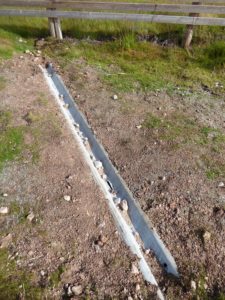 parodox here is the only way the Shieling track will look acceptable is if its not used. Perhaps the CNPA should have followed the advice of the North East Mountain Trust who suggested heather should have been re-established across the entire shieling slope and that the uptrack under the rope tow could have been used for occasional vehicle use?
parodox here is the only way the Shieling track will look acceptable is if its not used. Perhaps the CNPA should have followed the advice of the North East Mountain Trust who suggested heather should have been re-established across the entire shieling slope and that the uptrack under the rope tow could have been used for occasional vehicle use?
Cross drains have been installed along the Shieling track (left – a recycled Council road barrier is far cheaper than using natural materials) but the re-seeding has not stopped some sediment and stones being washed into them, a sign of continuing erosion.
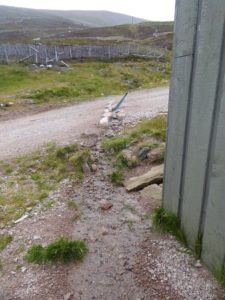
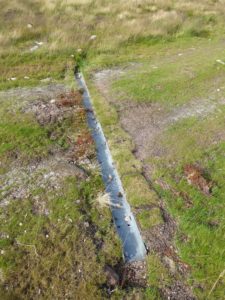 We did see one example of a cross drain where a significant amount of care had been taken (left). The turfs should help hold back and filter sediments. By contrast, above, was an example of Natural Retreats’ incompetence (right). Water channelled against the wooden sides of the pump house building! Rotten to the core!
We did see one example of a cross drain where a significant amount of care had been taken (left). The turfs should help hold back and filter sediments. By contrast, above, was an example of Natural Retreats’ incompetence (right). Water channelled against the wooden sides of the pump house building! Rotten to the core!
The landscaping of the area around the Shieling track
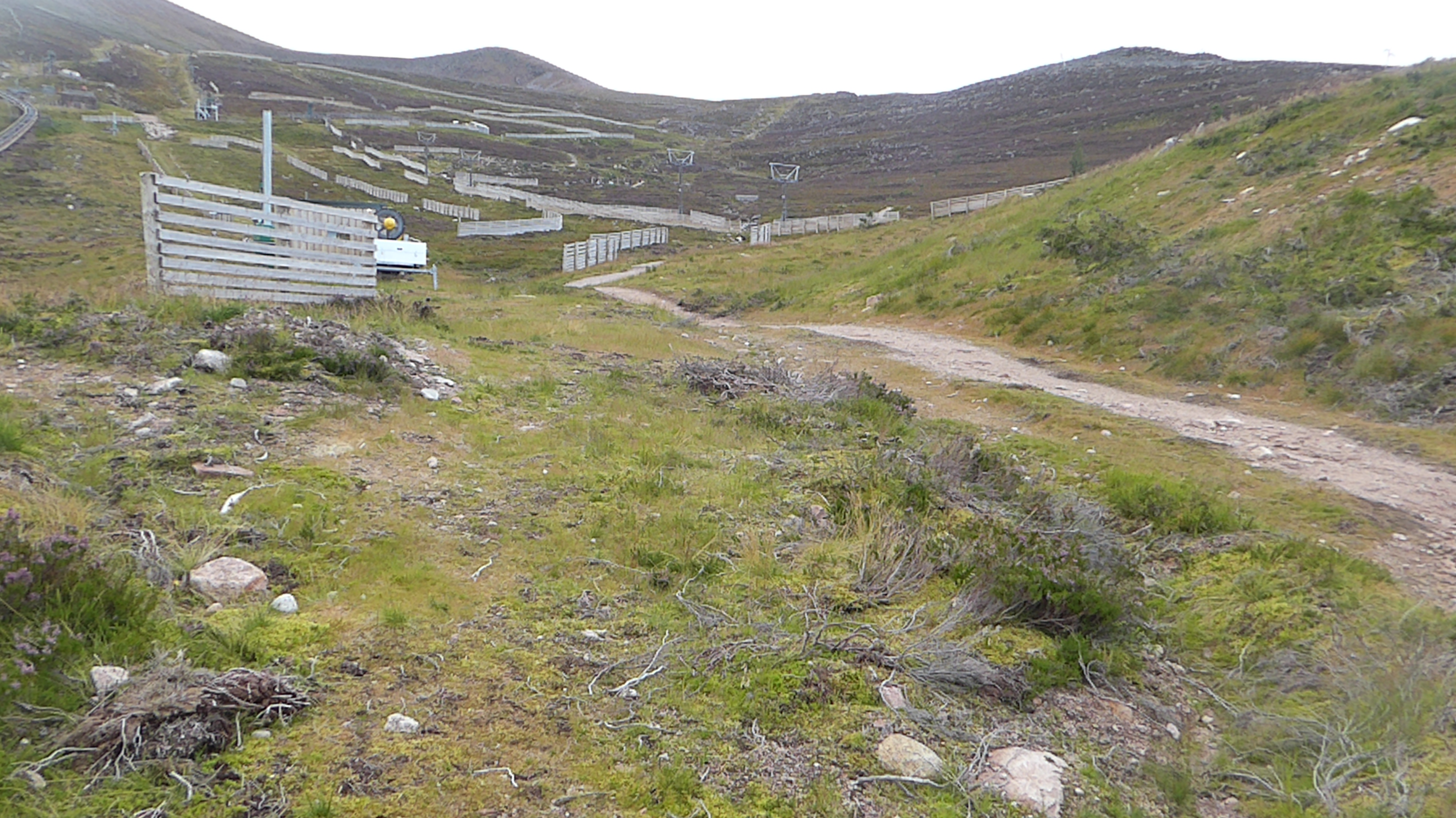
The photo demonstrates the large area affected by the shieling works and where vegetation and turves were not retained prior to re-instatement, hence all the re-seeding (the green in the photo). While heather should re-colonise this area in time we will need to wait to see other longer term impacts, such as whether invasive species colonise some of the ground. The picture will be complicated because the CNPA required compensatory tree planting as a condition of the retrospective planning permission, although this had not started at the time of our visit and there is no mention of this on Cairngorm Mountain’s “Behind the Scenes” blog (Autumn is a good time for planting).
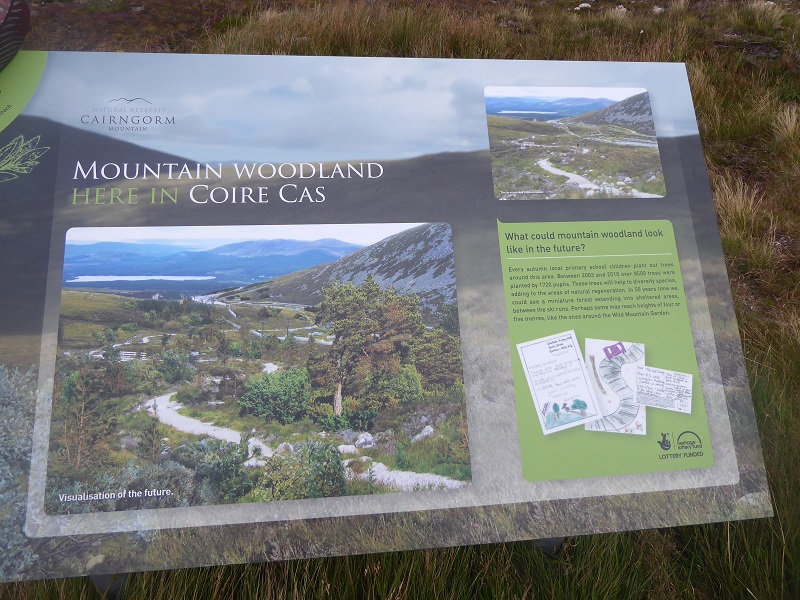 What was pleasing to see was the interpretation boards, which had fallen into utter disrepair, had been replaced. I suspect this was organised by the Ranger Service and perhaps by Nic Bullivant before he departed as head ranger. It appears this was funded by the lottery not Natural Retreats who appear to have no interest in this visualisation of the future. I believe this vision should be at the centre of an alternative plan for Cairngorm (with trees rather than snow fences collecting the snow). Unfortunately a number of trees were killed in the unlawful works that took place in Coire Cas and one reason there are not more trees here, in contrast to the path round to Coire an-t-Sneachda – is that vehicles are allowed to drive willy nilly over the vegetation.
What was pleasing to see was the interpretation boards, which had fallen into utter disrepair, had been replaced. I suspect this was organised by the Ranger Service and perhaps by Nic Bullivant before he departed as head ranger. It appears this was funded by the lottery not Natural Retreats who appear to have no interest in this visualisation of the future. I believe this vision should be at the centre of an alternative plan for Cairngorm (with trees rather than snow fences collecting the snow). Unfortunately a number of trees were killed in the unlawful works that took place in Coire Cas and one reason there are not more trees here, in contrast to the path round to Coire an-t-Sneachda – is that vehicles are allowed to drive willy nilly over the vegetation.
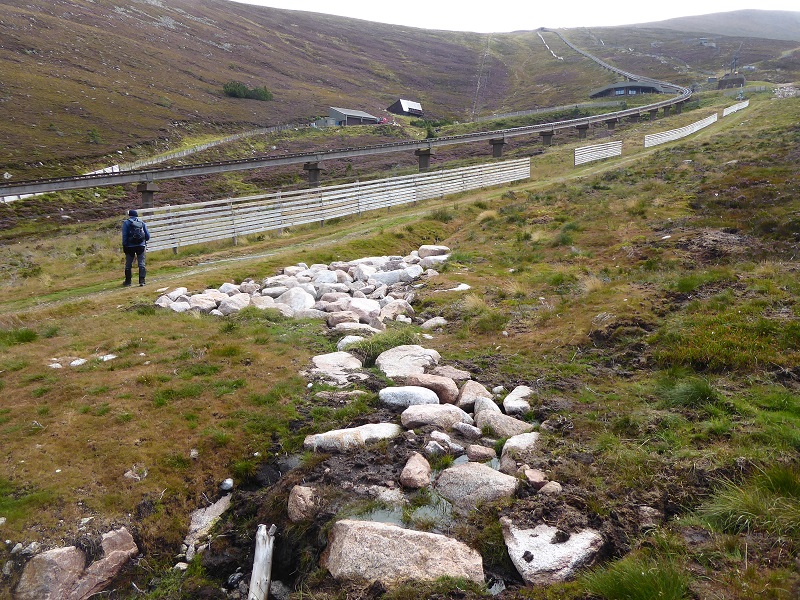 My biggest concern on the day was landscaping. The area with boulders is outwith that granted planning permission but has been subject to extensive engineering works and new drainage. It looks totally out of place and there has been no attempt to restore the slope to how it previously looked.
My biggest concern on the day was landscaping. The area with boulders is outwith that granted planning permission but has been subject to extensive engineering works and new drainage. It looks totally out of place and there has been no attempt to restore the slope to how it previously looked.
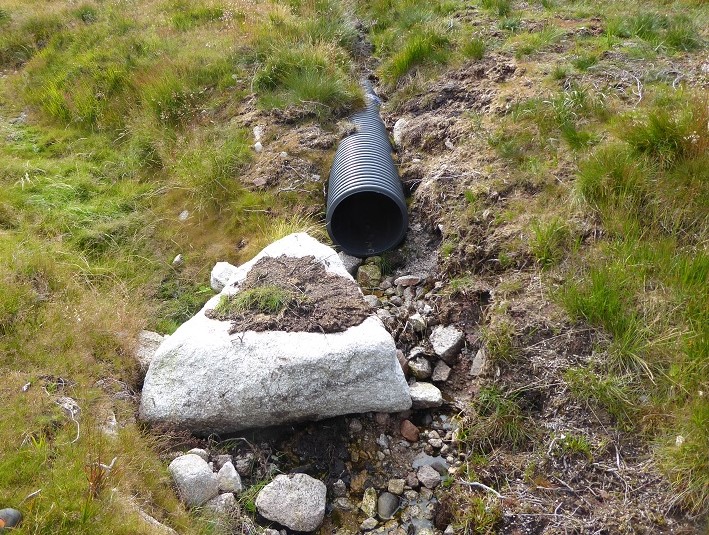 While culverts along the burn at the bottom of the shieling slope – which required permission from the Scottish Environment Protection Agency – have been finished well, other culverts which did have permission from SEPA, are right eyesores.
While culverts along the burn at the bottom of the shieling slope – which required permission from the Scottish Environment Protection Agency – have been finished well, other culverts which did have permission from SEPA, are right eyesores.
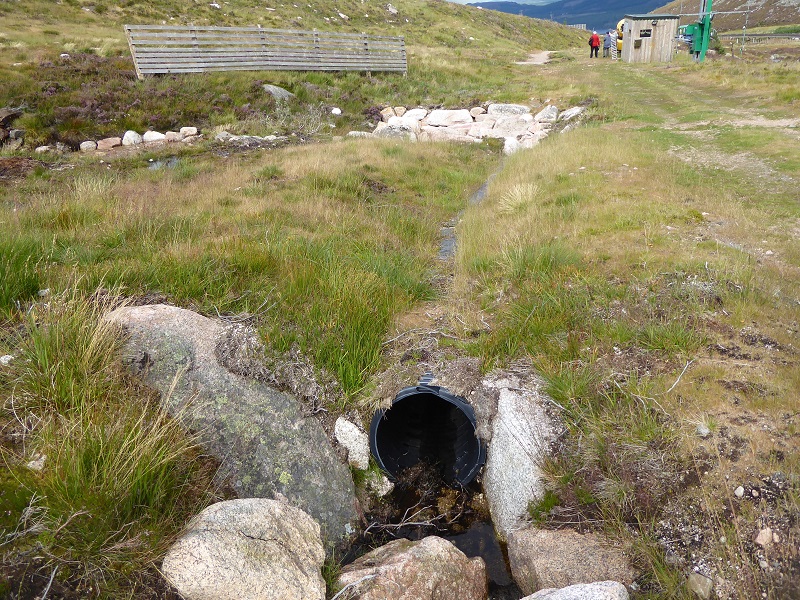
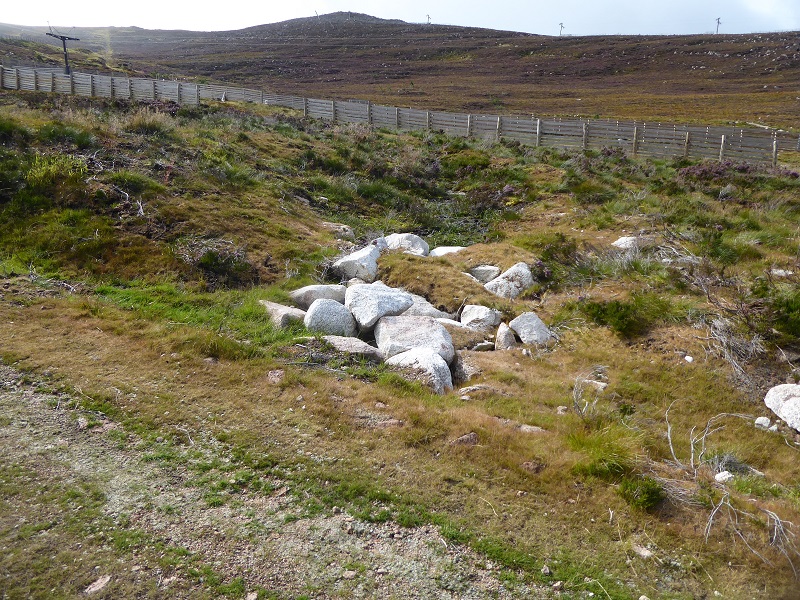

The shieling rope tow and surrounds was subject to planning permission from the Cairngorms National Park Authority and they therefore continue to have some influence (legally) on the restoration of this area. The three things I think they need to focus on are: restoration of vegetation, landscaping and the ecological impact of the changed drainage in the area.
The area above the Shieling rope tow
Highland Council agreed to works to prevent the collapse of the Cas Gantry on a de minimis basis without planning permission. On balance I believe the lack of any planning controls has contributed to the landscape restoration around the Cas Gantry being worse than than below.
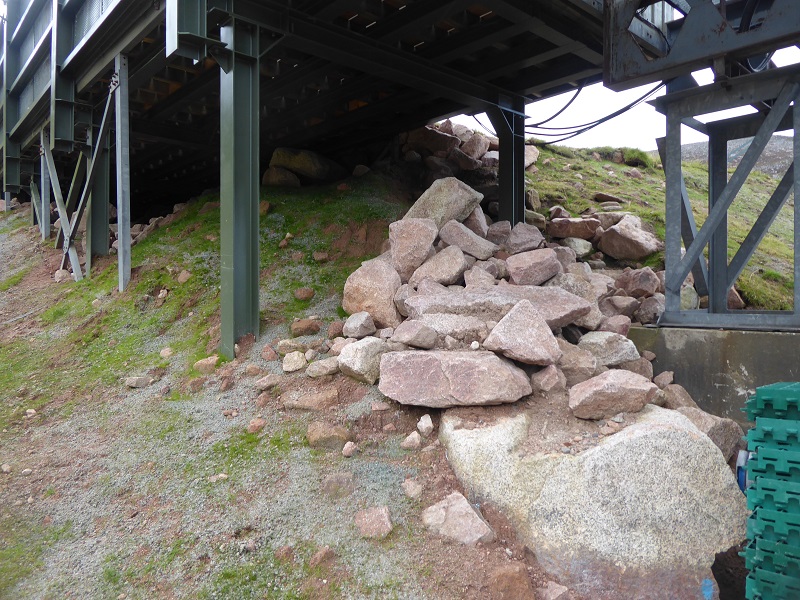
Some, but not all the boulders which were shoved under the gantry as a result of piste widening works (no planning permission) have been restored.
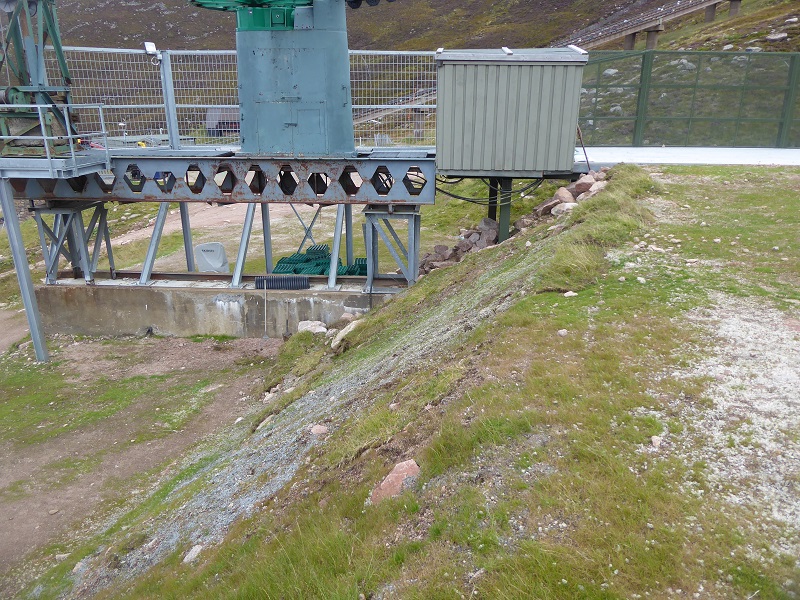
Turf has been placed along top of the slope which Natural Retreats excavated in order to try and prevent water flooding down it. The basic issue is the slope is too steep and no vegetation/turf was retained for restoration purposes. The bluish re-seeding pellets (left foreground) continue to get washed out and the risk is this slope will again be subject to severe erosion this winter.
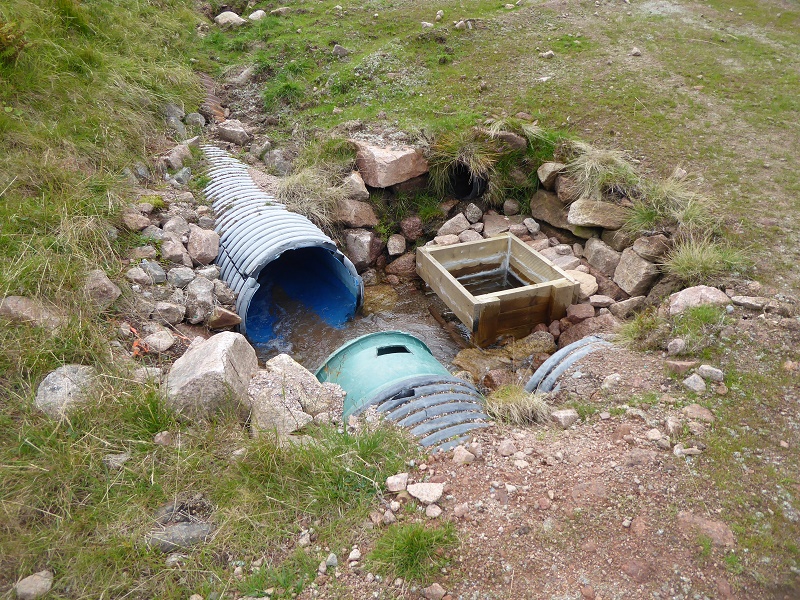
The finishing of the culverts is very poor.
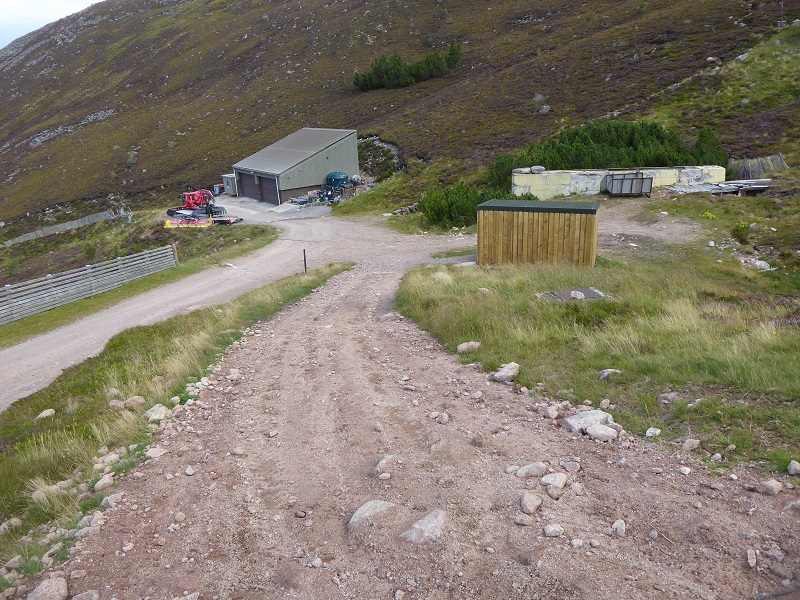
Worst of all though is the uncontrolled use of vehicles. The track above never used to be there, has been created through vehicle use, is far too steep and is eroding badly. It has never been granted Planning Permission. Forest Enterprise Scotland provides Prior Notification for new tracks as short as 40m to Planning Authorities so HIE has no excuse for this.
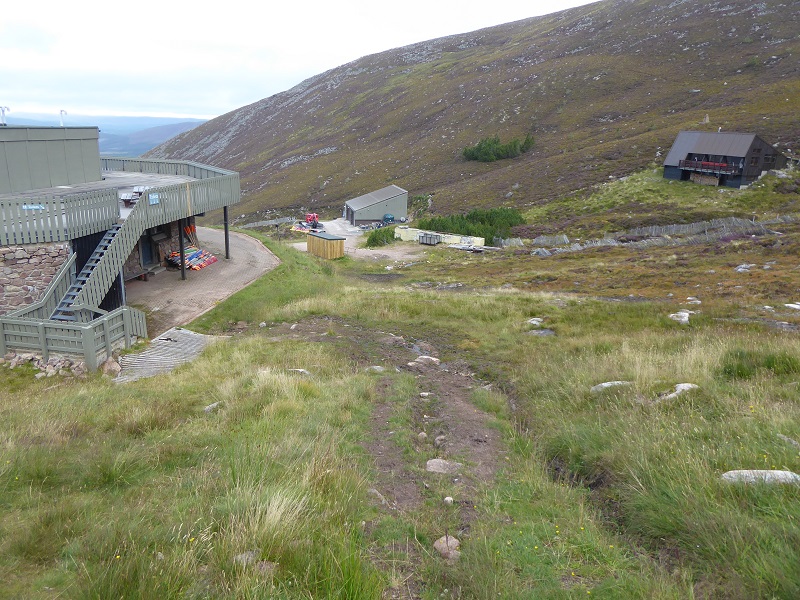
Off track use of vehicles at Cairngorm used to be strictly controlled but is now seen as unnecessary bureaucracy.
What needs to happen in Coire Cas?
The evidence shows that the clear-up and restoration of Coire Cas has a long way to go. I cannot see this happening as long as Natural Retreats continue to manage it (they are both incompetent and only interested in what money they can extract from Cairngorm) and HIE owns it. If Coire Cas is to protected and cared for a change in ownership and management is essential and the best chance of this happening is the proposed local community buy-out.
We also, however, need the CNPA to get involved, in what in tourist terms is the heart of the National Park. While this post has identified some areas around the Shieling rope tow where they could use their planning powers to drive further restoration, the involvement of the National Park should be much wider than that. Unfortunately at present they are no match for HIE which receives high levels of political support despite its mismanagement at Cairngorm.
It is now one year since the Cairngorm and Glenmore Strategy, which was supposed to deliver a comprehensive plan for Cairngorm, was agreed by the CNPA Board. In the papers for the Board Meeting this Friday the only reference to what is going on at Cairngorm is in the Chief Executive’s report:
Cairngorm and Glenmore – a visitor experience partner meeting is scheduled for mid-September to agree how to take forward the programme agreed in autumn 2016 and this will be linked to work with Active Aviemore. An application is being developed to submit to Leader for funding to study how visitors to Cairngorm and Glenmore use public transport and how this might be improved.
While its great work is going to be undertaken to see how public transport can be improved, is this really the only progress a year later? Unfortunately the Cairngorm and Glenmore Strategy has had a cart and horses driven through it with An Camas Mor at one end of the glen and Natural Retreats at the other.
What we need above all is for the CNPA to assert its moral authority to be the lead agency in the National Park and to start taking a lead at Cairngorm. A good statement of intent, which should be supported by the Environment Minister Roseanna Cunningham who is in favour of community control, would be if the CNPA was to offer its resources (as per its commitment to support local communities) to assist the proposed community buy out.

It’s “funny” how HIE keep coming up in all these observations !
Surely their Property and Infrastructure “Manager” has to be ultimately responsible for the long-running damage to Cairngorm ?